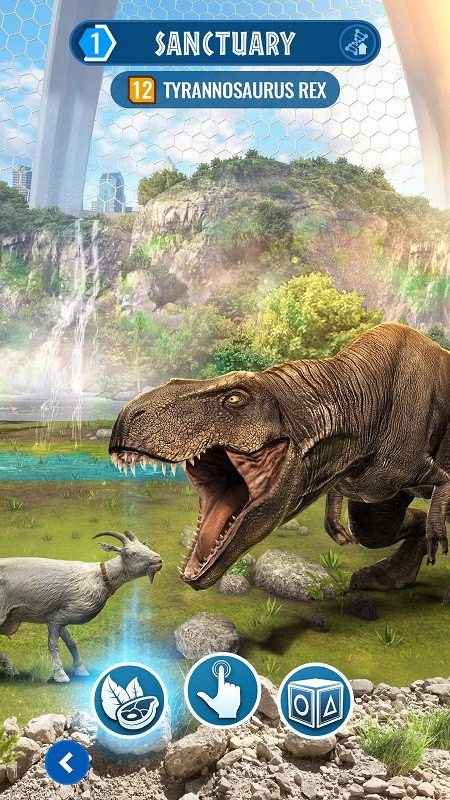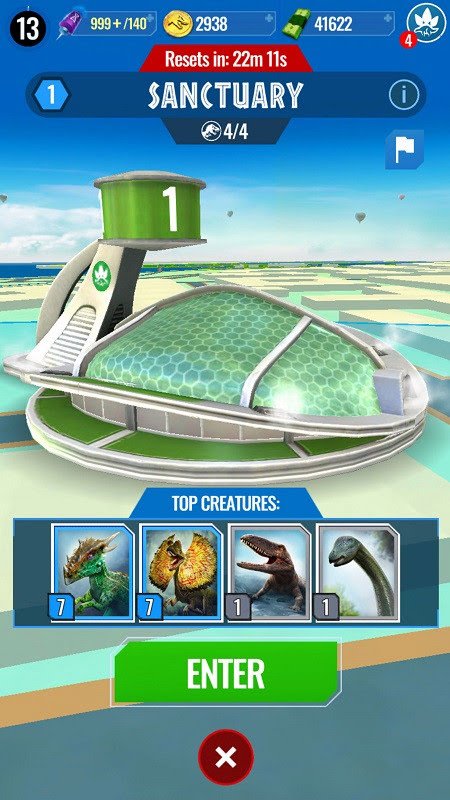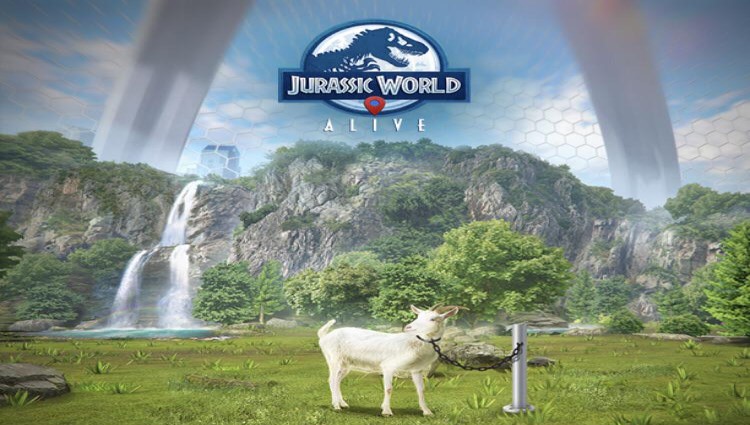Jurassic World Alive will soon have sanctuaries like Ludia’s other Jurassic World games. These sanctuaries will be placed all over the world map to allow you can protect and care for your creatures.
The latest update version 1.8 brings a lot of changes which the game community has been asking for. Dracoceratops and Dracorex Gen 2 nerf, balancing critical strike and cloaking and an among others a new way to interact with the Jurassic World.

Sanctuaries will be like supply drops and strike towers, placed all over the world and you will be able to interact with them when in range. Creatures can be placed in sanctuaries, which will make them unusable for that period of time.
While in sanctuaries you can feed and take care of those creatures in return you will get DNA from them. A maximum of 4 creatures can be placed in sanctuaries, which may be in just 1 sanctuary or spread across 4 different sanctuaries.
Sanctuaries will enhance a player’s connection with their dinosaurs and care for them. You will be able to feed goats to your T.rex or your favorite raptor.
[adinserter block=”1″]
Sanctuaries Overview:
- You place your creatures in sanctuaries to feed, play and interact with them.
- Collect Food and Toys in Supply Drops and Interaction items in the Free Incubator in the Market.
- Use these Care items on your or other players’ creatures in Sanctuaries. Remember, each creature has different tastes and preferences and will give different reward amounts based on what it wants!
- You receive DNA rewards when you care for creatures. You also receive Sanctuary Points to Level up the Sanctuary.
- Leveling up a Sanctuary means you get more slots to place more creatures inside, and more DNA every time you care for a creature!
- In Caring View, you can press and hold on each Care button to preview if the creature will like this interaction and how much DNA you will get!
- Work together with other visitors of the Sanctuary, and with your Alliance members to improve your Sanctuaries as much as possible.
- Creatures stay in Sanctuaries for 48 hours. When they come back, they reward you a little extra DNA.
- Each Sanctuary resets 2 weeks after it was first activated. Sanctuaries activate when the first creature is placed in them. At reset, all creatures are returned to their owners, the Sanctuary returns to level 0 and additional creature slots return to their locked state. Start placing creatures and caring again to gain them back!
- Note: Each player can have a maximum of 4 of their creatures in Sanctuaries at one time. You can choose to spread these 4 creatures out across as many as 4 Sanctuaries, or place them all in 1!
Sanctuaries Level
When you approach a sanctuary, you will notice a number on top of it, that the level of the sanctuary. A sanctuary can be leveled up from Level 1 till Level 20, with each level a new slot will open up to place a creature in it.

With an increasing level, the amount of DNA that you get by interaction with creatures will also increase.
When you click on a sanctuary it will show the amount of time left for the Sanctuary to reset (reset time is 14 days) to level 1 and all the creatures will return. Top creatures in the sanctuaries are also shown.
[adinserter block=”1″]
Enclosures
Once you enter a Sanctuary, you’ll notice you can swipe left or right to see the various enclosures. These enclosures are essentially different locales where your dinosaurs can be. For the moment, though the scenery in the background changes for each enclosure, it doesn’t seem like there’s any difference in placing creatures in one over the other. But we will validate that data shortly and update this article if that isn’t the case.
Each enclosure houses up to 8 dinosaurs, and each level up of the Sanctuary adds one more slot. You can personally place up to 4 dinosaurs total in Sanctuaries at any one time. Below I’ve placed all four in a level 1 sanctuary, but you could place two in one and two in another or one dino in four separate sanctuaries — but the cap is four dinos at any one time can be out among the many possible sanctuaries
There are certain restrictions that can prevent you from placing a creature in a Sanctuary. The following creatures cannot be placed:
- Creatures that are on your Strike Team.
- Hybrid creatures.
- Creatures that you already placed in another Sanctuary (creatures can’t be in two places at once!).
- Creatures that are too dangerous for your current Player Level, as shown on their creature portrait.
- Flying creatures.*
- Cenozoïc creatures.
WHAT ARE ENCLOSURES?
Enclosures are areas within the Sanctuary where you can place creatures. As soon as you enter the Sanctuary, you are in one of the Enclosures.
Each sanctuary is composed of 3 Enclosures. Each enclosure can hold up to 8 creatures. You can navigate between Enclosures by using the arrow buttons in the Enclosure view.
WHAT ARE THE BEST STRATEGIES TO MAKE THE MOST OUT OF SANCTUARIES?
Here are some tips, coming directly from the design team:
- Use all your Care items
- Make sure you collect as many Care items as you can every day, and use them daily.
- Use the preview tooltip often!
- Press and hold Care buttons to see a preview of your rewards. Use it to check which combination of care and creature will give the most DNA or Sanctuary Points!
- Level up your Sanctuaries as much as possible
- Use powerful creatures (high level and high rarity) to gain more Sanctuary Points and level up faster!
- Join an Alliance!
- This is probably the best tip we can give! An Alliance allows you to cooperate to level up your Sanctuaries as much as possible before they reset.
- Ask your allies to place the creatures you need in Sanctuaries you can access.
- This is a great way to get specific DNA of creatures you can’t find otherwise.
- Check with other players
- Maybe they have another great strategy that we didn’t even think about!




Leave a Reply